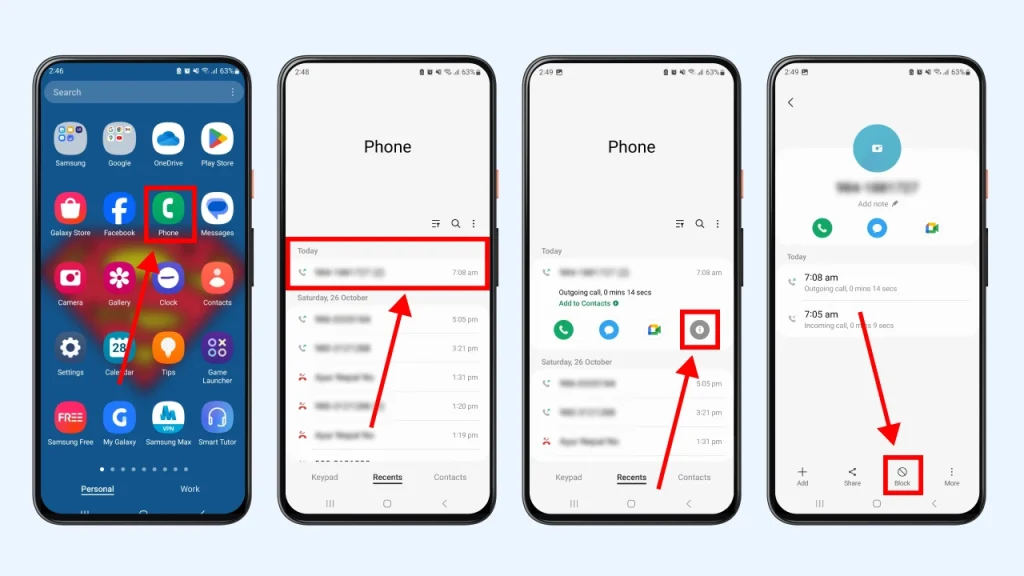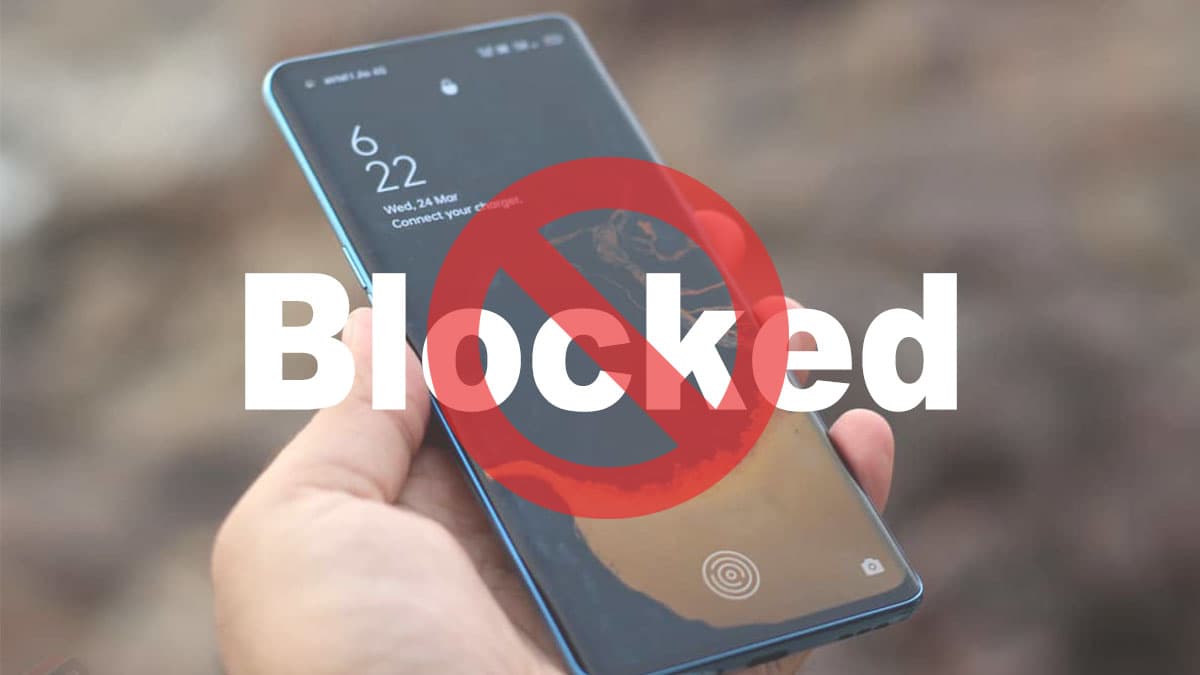How to Blacklist a Stolen or Lost Phone in South Africa: Your Step-by-Step Guide
Losing your mobile phone in South Africa can be incredibly stressful, especially if it falls into the wrong hands. Beyond the inconvenience, there’s the risk of your data being compromised or the device being used for illicit activities. Blacklisting your phone is a crucial security measure that ensures it becomes unusable on all major mobile networks, protecting your personal information and deterring theft.
This comprehensive guide will walk you through the essential steps to blacklist your phone effectively in South Africa.
You may also need to check: Uncapped Fibre Home Wifi Deal
What Does It Mean to Blacklist a Phone? 🕵️♀️
Blacklisting a phone involves registering its unique IMEI (International Mobile Equipment Identity) number in a global database of stolen or lost devices. Once an IMEI is added to this database, mobile network operators (like Vodacom, MTN, Cell C, and Telkom Mobile) are alerted to block the device from accessing their services.
This means that even if a thief tries to insert a new SIM card into the blacklisted phone, it won’t be able to make calls, send texts, or use mobile data. Essentially, the phone becomes a “brick” on any legitimate network, drastically reducing its value to criminals.

Step-by-Step Guide to Blacklisting Your Phone in SA
Acting quickly is key when your phone is lost or stolen. Follow these steps to initiate the blacklisting process in South Africa:
Step 1: Report the Loss or Theft to Your Mobile Carrier Immediately 📞
Your first point of contact should be your mobile network operator (MNO).
Related read: Scamalytics – The Ultimate Guide to Fraud Detection and Scam Prevention in 2025
- Contact Details: Call their customer service line as soon as you realise your phone is missing.
- Vodacom: 082 111
- MTN: 083 135
- Cell C: 084 140
- Telkom Mobile: 081 180
- Provide Information: You’ll need to provide details about the incident, your account information, and most importantly, your phone’s IMEI number. If you don’t have it immediately available, they might be able to find it through your account records, especially if you purchased the phone from them or registered it.
- Request SIM Blocking: Ask them to block your SIM card immediately. This prevents unauthorized calls, SMS, or data usage from your number, protecting your airtime, data, and preventing potential financial fraud.
Step 2: Obtain a Police Report 🚔
Filing a police report is a mandatory step for blacklisting in South Africa and is often required by your mobile carrier and insurance companies.
- Visit Your Local Police Station: Go to your nearest South African Police Service (SAPS) station to officially document the theft or loss.
- Provide Details: Give them all the information you have: the date, time, and location of the incident, a description of the phone, and its IMEI number.
- Get a Case Number: Ensure you receive a case number (CAS number) or a copy of the official police report. This document is crucial for the blacklisting process and any potential insurance claims.
Step 3: Request Blacklisting from Your Carrier (with Police Report) 📝
Once you have your police report (or at least the case number), contact your mobile carrier again.
- Submit Documentation: Provide them with your phone’s IMEI number and the police report case number. Some carriers might require you to email or physically submit a copy of the report.
- Confirm Blacklisting: Your carrier will then process the blacklisting request. They will register your phone’s IMEI on the national and global databases for stolen devices, effectively rendering it unusable on all South African mobile networks. Ask for confirmation that the blacklisting has been initiated.
Step 4: Track the Phone (If Possible & Safe) 📍
Before or even during the blacklisting process, if you have tracking services enabled, you might attempt to locate your device.
- Apple Devices: Use Find My iPhone (via iCloud.com/find or the Find My app on another Apple device) to locate, lock, or erase your device remotely.
- Android Devices: Use Google Find My Device (via android.com/find or the app) to locate, lock, or erase your Android phone.
- Important: If you locate your phone, do NOT attempt to recover it yourself. This can be dangerous. Instead, provide the location information to the police.
- Recovery and Whitelisting: If your phone is recovered, you can contact your carrier with proof of ownership and the police report to request that it be removed from the blacklist (whitelisted), making it usable again.
How to Find Your Phone’s IMEI Number 📱
Knowing your IMEI number before your phone is lost or stolen is incredibly helpful. Here’s how you can find it:
- *Dial #06#: This is the quickest way. Open your phone’s dialer and type
*#06#. Your IMEI number(s) will instantly appear on the screen. Jot it down and keep it somewhere safe. - Check Phone Settings:
- Android: Go to Settings > About Phone (or About Device) > IMEI information.
- iPhone: Go to Settings > General > About. Scroll down to find the IMEI.
- Original Packaging or Invoice: Your IMEI number is usually printed on a sticker on the original box your phone came in. It’s also often listed on your purchase invoice or receipt.
- Under the Battery (Older Phones): For some older phone models with removable batteries, the IMEI is printed on a sticker beneath the battery.
- Through Your Carrier Account: Some mobile carriers allow you to log into your online account and view the IMEI of devices registered under your name.

Why Blacklisting Your Phone is Essential 🛡️
Blacklisting goes beyond simply replacing your device; it’s a vital security measure:
- Protect Your Personal Data: Prevents unauthorized access to your contacts, photos, banking apps, and sensitive personal information, even if the device is unlocked.
- Prevent Fraud & Criminal Activity: A blacklisted phone cannot be used to commit fraud, make illicit calls, or engage in other criminal activities on mobile networks, reducing the chances of your device being implicated.
- Deter Theft: If thieves know that stolen phones are easily blacklisted and rendered useless for network access, it reduces the incentive for them to target mobile devices, making theft less appealing.
- Insurance Claims: Most insurance providers will require a police report and proof of blacklisting to process a claim for a stolen or lost phone.
Final Thoughts: Stay Secure 🔒
Blacklisting your phone is a crucial step to safeguard your personal data and prevent misuse if your device is lost or stolen. Act quickly by reporting the loss to your carrier, obtaining a police report, and then formally requesting the blacklisting. Remember, having your phone’s IMEI number stored safely in advance can make this stressful process much smoother.
Protect your devices and stay secure with these essential tips!













